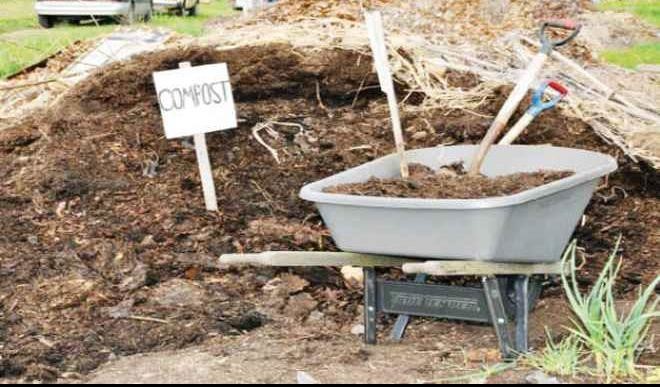Compost: Better alternative to inorganic fertiliser
With the uncertainty that trails the inorganic fertiliser markets, seeking alternatives have become mandatory for farmers who wish to reap benefit of their labour. Daily Trust examines one of the available options for achieving self-sufficiency in food production. Speaking with Dr. Ajayi Ademola, a lecturer in the Department of Agriculture, Federal College of Agriculture, Akure, […]


With the uncertainty that trails the inorganic fertiliser markets, seeking alternatives have become mandatory for farmers who wish to reap benefit of their labour. Daily Trust examines one of the available options for achieving self-sufficiency in food production.
Speaking with Dr. Ajayi Ademola, a lecturer in the Department of Agriculture, Federal College of Agriculture, Akure, he said compost not only improves soil fertility but also influences the physical and chemical properties of soil including organic carbon and binding properties of the soil.
Similarly, a composting expert, Alhaji Mansur A. Daura, former Director at the Katsina State Agricultural and Rural Development Authority (KTARDA), disclosed that compost stays for up to four years in the soil thereby increasing cation exchange capacity of the soil, checks leaching of nutrients and drastically reduces erosion.
“On my farm in Tambu, Daura, Katsina State I planted cowpea on about 1.5ha and I got about 33 bags from the farm and I did not use any inorganic fertiliser but compost,” he proclaimed.
Mansur explained that compost can either be broadcasted, applied on spot or applied just before harrowing prior to planting and it takes from 3 to 4 months to fully decompose.
“Some of the materials needed for making a comprehensive compost include; poultry manure, cow dung, sawdust, rice straw and husks, chopped maize/ millet stalks, threshing waste of millet, maize or both and ash,” he said.
He explained that the materials are layered in an enclosed building or dug soil pit where top soil comes first in layering, then sawdust, chopped stalks of maize/ millet or preferably rice straw, maize, millet or sorghum threshing waste, undecomposed cow dung and/ or poultry manure and lastly ash.
Mansur advised that when the focus is on cereal production, vegetable and fruit scraps should be incorporated into the compost, stating further that the mixture needs to be turned two to three times.
He explained that the layers are repeated in that order until the pit is full and water is sprinkled on each layer, allowing the mixture to settle down during afternoon hours then covered with a polythene sheet.
Again, Dr. Ajayi advised that farmers use a stick to monitor soil pit temperature, and the stick should be pulled out after a week. He added that some water be added to facilitate decomposition if the stick is not at least warm.
Another expert, Dr. Adenekan M. Olutayo, Head of Department Federal College of Agriculture, Moore Plantation in Ibadan said compost demineralises slowly, as such, nutrients are gradually made available to plants.
“Compost is relatively cheaper than inorganic fertiliser and does not have detrimental effects on the soil. It does not affect soil micro-organisms population like the inorganic fertiliser does”, he said.
On perishability, Dr. Adenekan disclosed that compost bins can store compost longer than dug soil pits, adding that the only limitations associated with compost are in terms of mobility, quantity applied and odour emanating from it.
